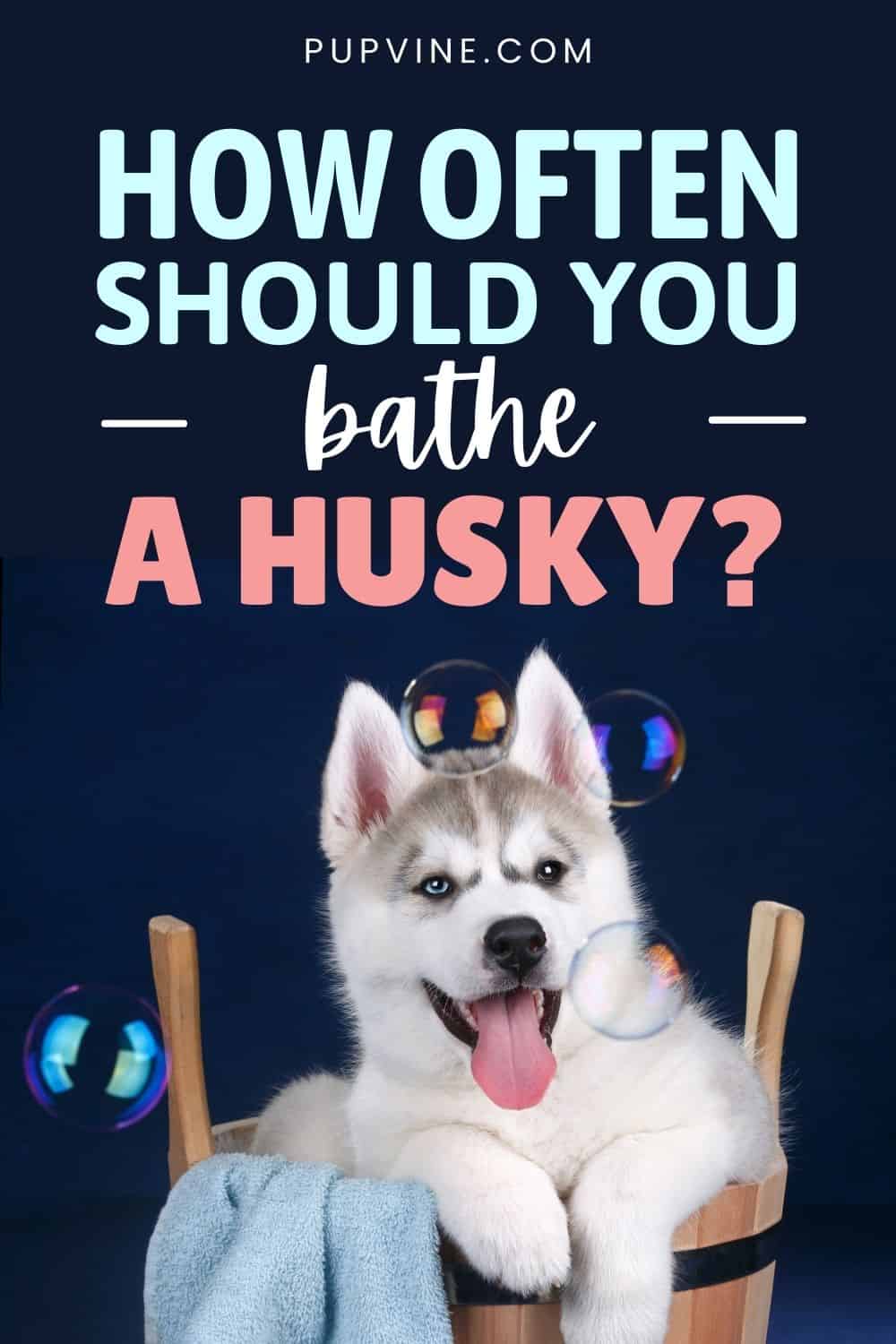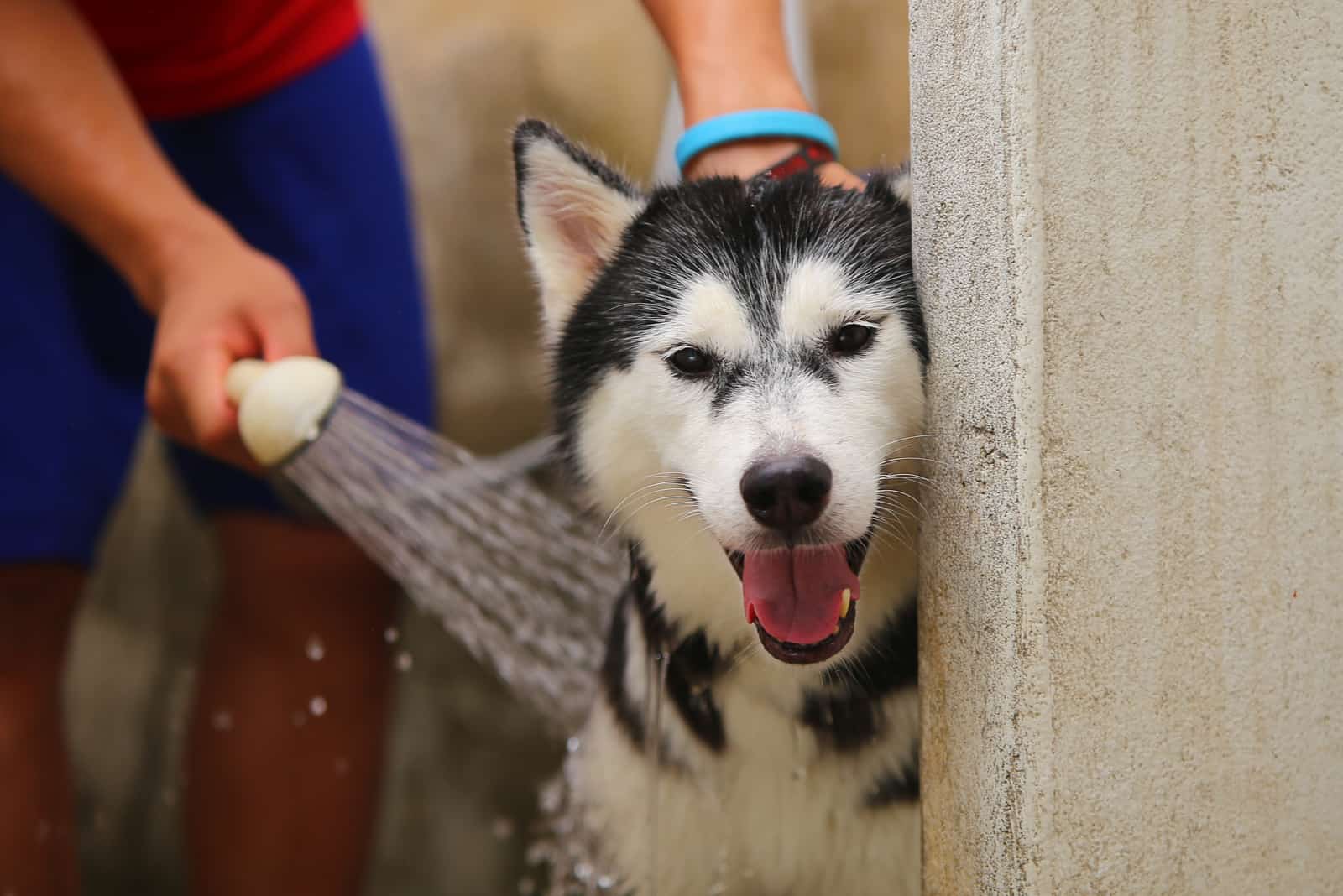We all want what’s best for our dogs so much we forget what the dog needs. The thing is, dogs don’t need too much. Not too much food, not too much exercise, and not too much bathing.
Okay, they do need too much love, but that’s a whole other story. Today, we’re focusing on the big mistake almost every inexperienced Husky owner makes, and that is: overbathing their dog. But, how often should you bathe a Husky, to begin with?
The answer lies in an absolute balance, but first, we need to understand the complexity of the Husky’s fur.
Let’s dig our fingers through two thick and fluffy coats and see whether it’s time for a bath!
What Do I Need To Know About The Husky’s Fur?
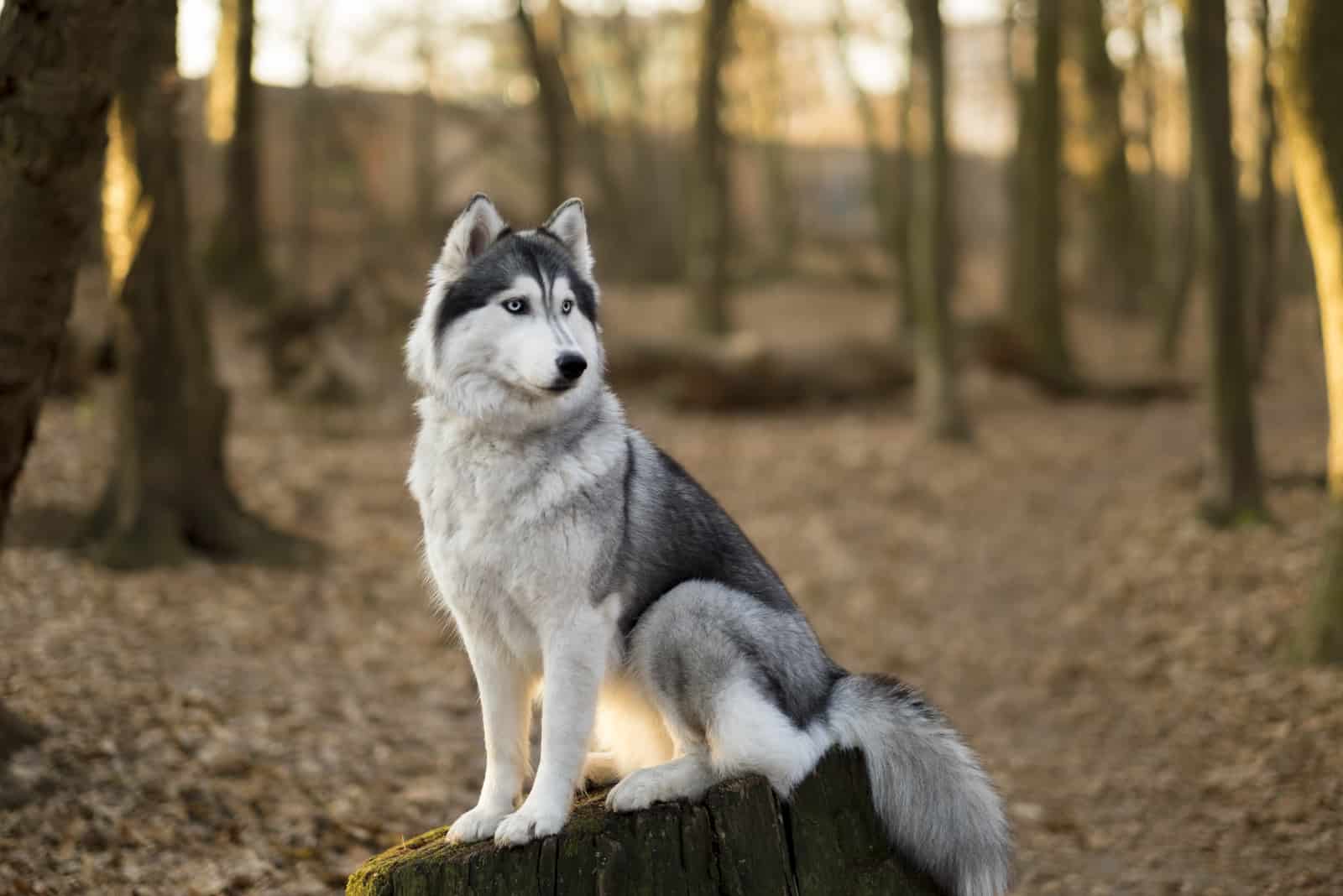
The Siberian Husky is a purebred dog breed with gorgeous eyes and even more stunning coat characteristics.
Studies have shown the Siberian Husky to be closely linked to an ancient Siberian wolf that lived over 35,000 years ago. The ancient Siberian Husky naturally had a much different coat than modern Huskies, much thicker to endure the cold weather.
Modern-day Huskies have a range of colors and patterns, but they’re awfully similar to the colors and patterns wild wolves have.
The one thing that has changed between today’s Husky and their wild wolf ancestor is the size. Siberian Huskies come in standard and miniature size. However, we do have the teacup version too! While they’re different in size, these two Husky variations have the same color and pattern standards.
The current breed standard claims there are no disallowed Husky colors, patterns, or markings due to health issues. But, still, some breed clubs question the merle and brindle patterns.
The Siberian Husky Club of America (SHCA) released a statement claiming these markings may result from the genetic influence of other dog breeds. What they’re really trying to say is that such dogs may not be purebred Siberian Huskies.
The health issues may become even more serious, especially with dogs that have the double merle gene. When two Siberian Huskies with merle genes breed, the result is a double merle puppy.
Health issues double merles face aren’t always fatal, but they can limit life to the point where euthanasia is the only way out. Such health issues include missing eyes, poorly developed eyes, deafness, congenital blindness, and deafness.
However, the double merle Husky is quite rare to find, so we will now focus on the standard Siberian Husky color chart, aka the Siberian Rainbow.
According to the American Kennel Club (AKC), the Siberian Husky can have the following colors:
• agouti and white
• black and white
• grey and white
• red and white
• sable and white
• white
Other not so common colors and markings include:
• black
• black/grey and white
• black/tan and white
• brown/black and white
• copper and white
• grey and black
• tan
• black and tan
• white and tan
• black marking points
• pinto markings
• piebald marking
• brown
These colors and markings aren’t that common, but they aren’t rare either. In fact, there are no unusual or rare Husky colors, patterns, or markings!
The common denominator for all these colors is they all share the same coat type. In other words, all Huskies have two coats – a top and an undercoat.
Since this is a working dog that once had to live in harsh conditions, the Siberian Husky has a double coat, meaning there are two layers of fur. Each layer has an important purpose in protecting the dog’s skin and keeping it warm or cool.
The undercoat is soft and fluffy. The hair is usually slightly crimped to keep in the hot air. During the two shedding seasons, it releases clumps of dead hair.
A Husky with a single coat has either shed the fluffy undercoat for the warm weather, or it isn’t really Husky, to begin with. What’s important is to know the reason behind excessive shedding (e.g., inappropriate dog food) and to make a difference between this and false Huskies.
Unlike the undercoat, the top coat has long and thick guards of hair that provide protection. It’s the top coat’s job to repel water, keep the heat in during the winter, and allow the skin to breathe in summer. The topcoat also blocks UV rays.
The undercoat sheds twice a year, but the topcoat sheds gradually all year-round.
The undercoat is a soft, downy layer that protects against cold weather. These fine hairs are usually slightly crimped to help trap warm air in. The undercoat is thick and full. Siberian Huskies shed their undercoats twice a year, usually in the spring and fall. The undercoat sheds in clumps and chunks over a two to three-week period. In hot summer months, the undercoat is generally thin or practically nonexistent, and in winter months, it becomes very thick and fluffy.
Some Huskies have a wooly coat. Don’t get confused – this is still a double coat, but the guard hairs are a bit longer. This coat may look attractive, but it’s no good for working Siberian Huskies. The coat is long, soft, and doesn’t provide water, cold, and ice protection.
Also, it takes longer to dry, which makes these dogs inappropriate for cold weather.
Because of their coats, Huskies are not hypoallergenic dogs, so bear that in mind if allergies are something you’re grappling with.
How Often Should You Bathe A Husky?
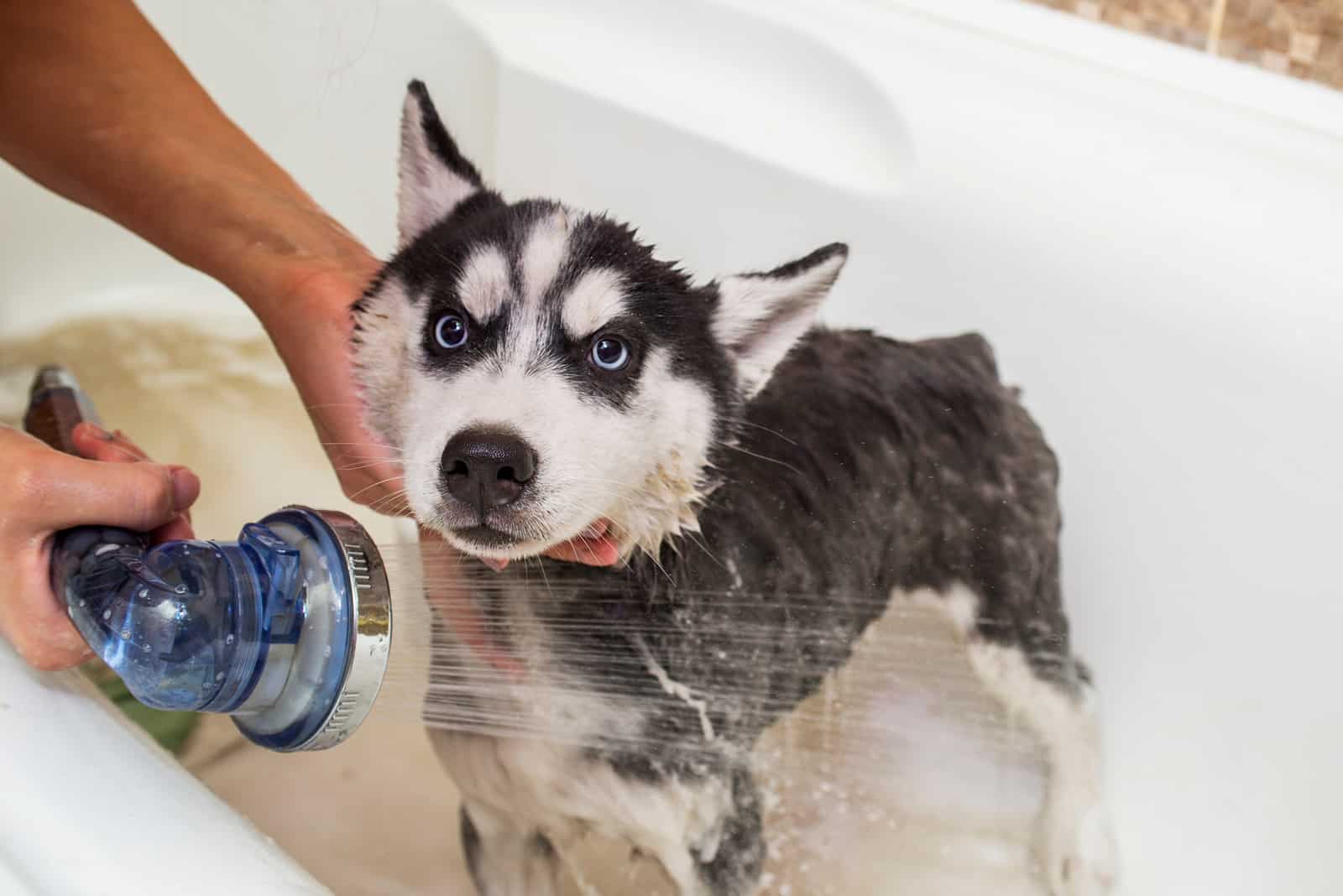
There is no magical number.
No one can say you should wash your dog five times a year or twice a month. But, it’s become a grooming standard to wash a Husky once every three months. This is an average number, not too little and not too much.
There are still dog owners that will wash their Huskies even less if they have skin or coat issues.
But, there are even those who will have to wash the dog unexpectedly because it got filthy on one of its daily adventures. This is absolutely fine. You can’t just leave the dog sitting there all dirty. Dirt causes even more skin problems than you’d think!
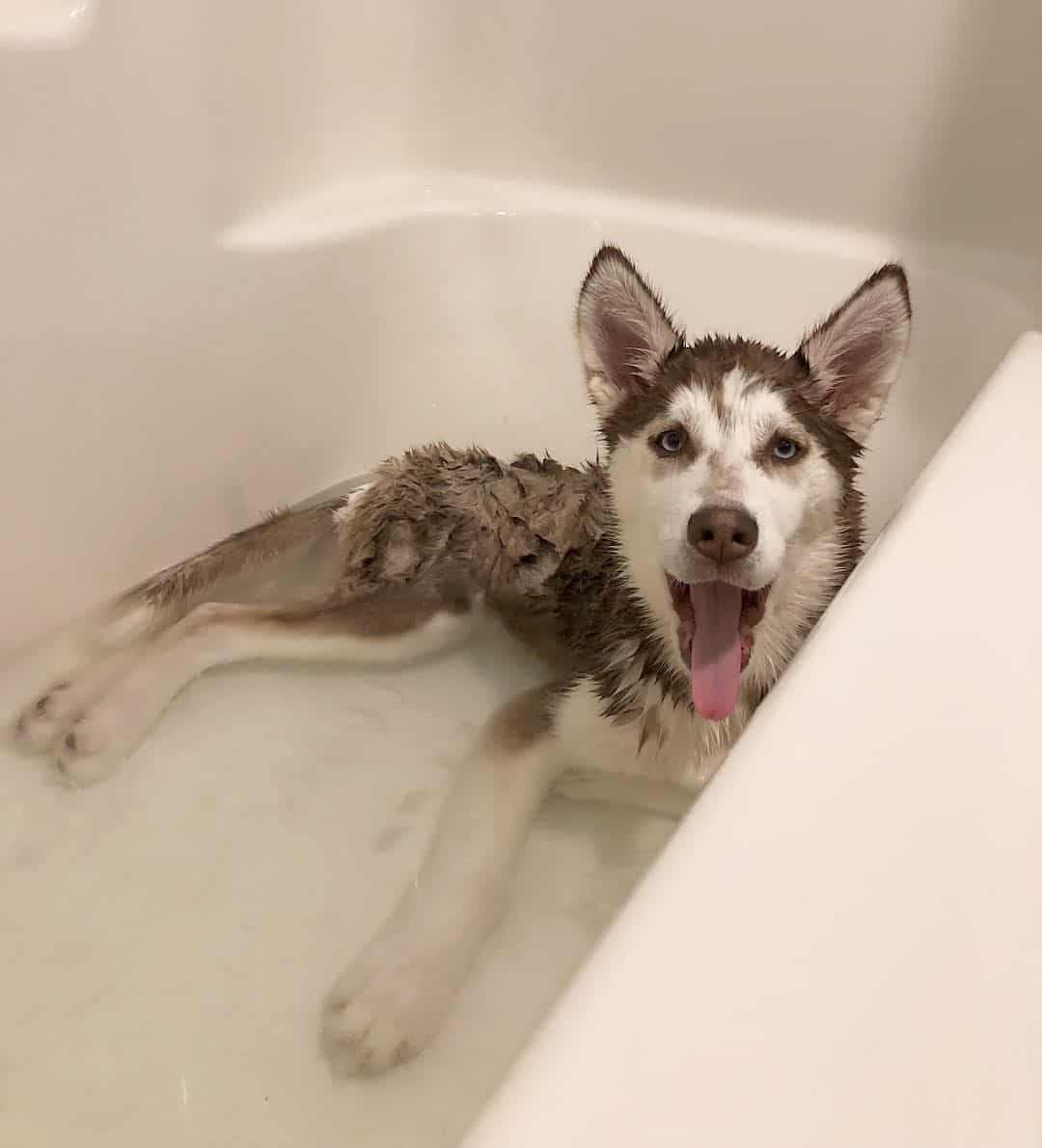
Photo from @miloandmiska
Here are situations when bathing outside the schedule is justified:
• if your Husky gets extremely dirty on your daily walk
• if it starts to blow out its coat, to ease and speed up the loosening process
• if a topical flea spray was recently used
The key to a perfectly groomed, clean, and healthy dog isn’t regular trips to a dog groomer. It’s avoiding overbathing at all costs.
Huskies Are Naturally Hygienic
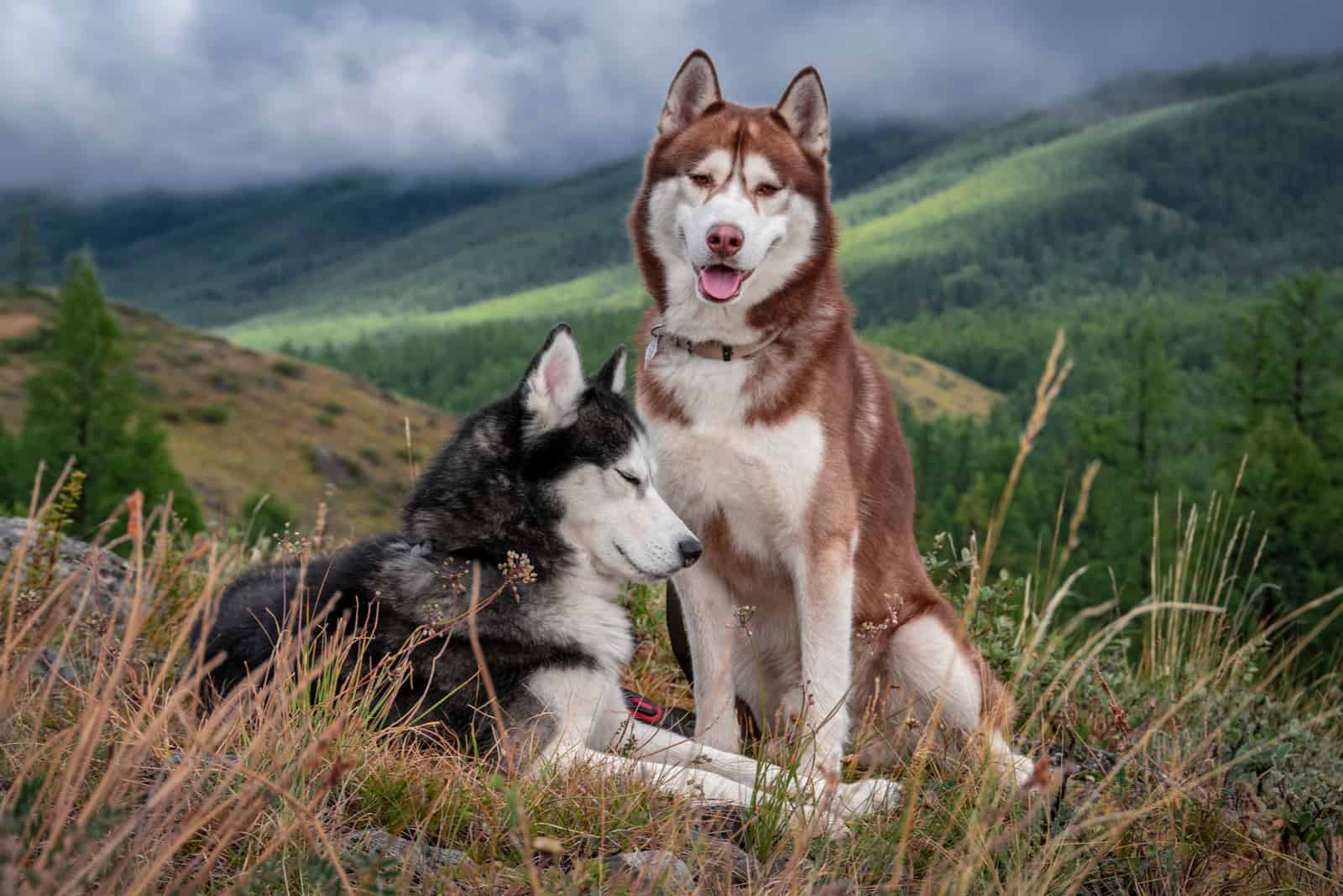
Unlike many other breeds, Huskies are extremely hygienic.
In fact, you can call them the cats of the canine world, but shh, they’re much better! These dogs will take the time to clean themselves by licking their fur.
Since they clean themselves a lot, Huskies don’t produce the doggy odor many other breeds do. So, if you want a dog but prefer a lovely, odorless house, this is the best dog for you!
Why A Siberian Husky Shouldn’t Be Bathed That Often
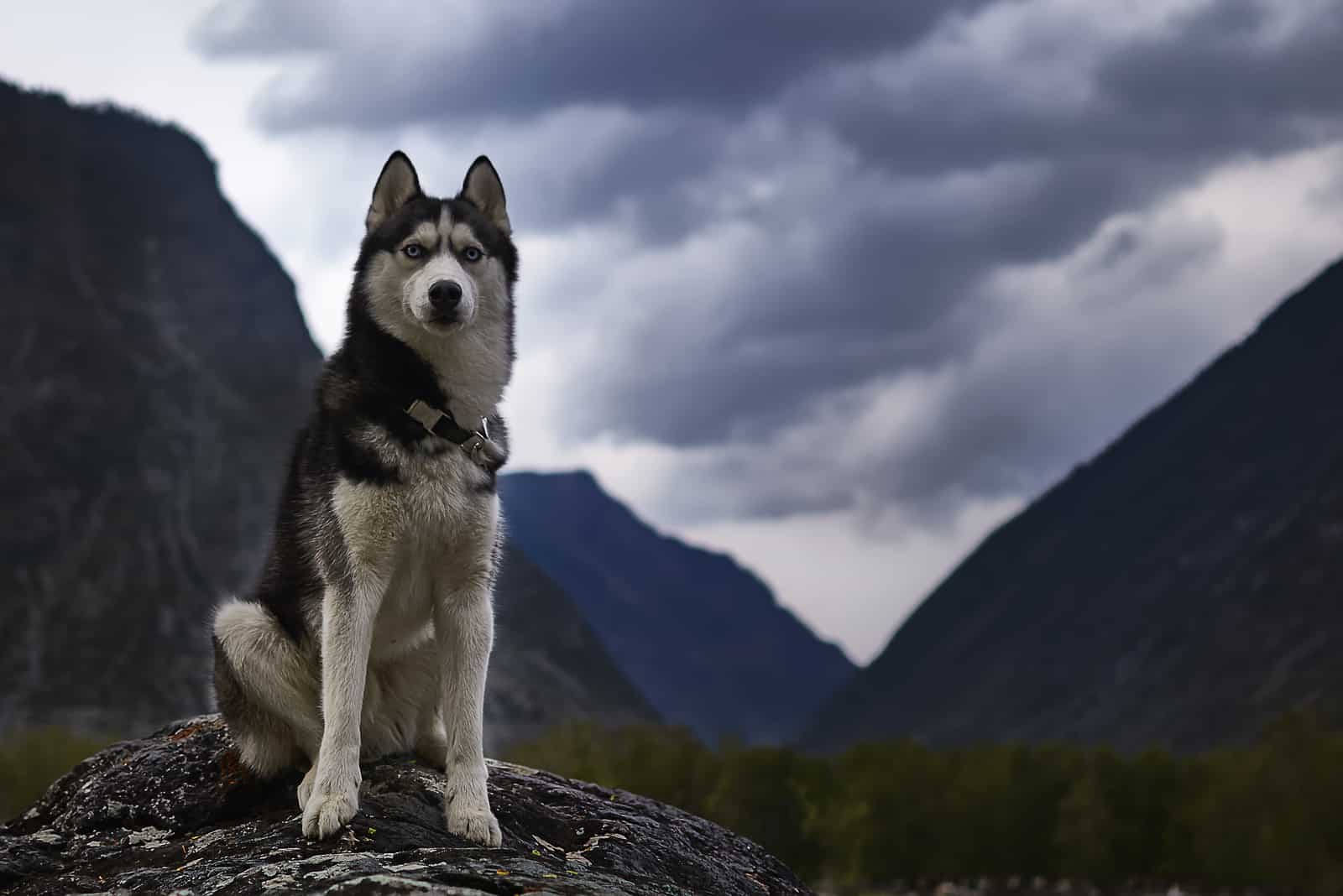
When trying to figure out whether to wash your Siberian Husky or not, go with the advice of experienced Husky owners. They’ve made the correct decision of not bathing their Huskies more than three or four times a year.
But why shouldn’t a Siberian Husky be bathed that often?
Even with the use of a specially formulated all-natural shampoo, bathing can cause more harm than good. Frequent bathing strips too many of the natural oils on the skin and coat. These oils keep the skin and coat healthy and shiny. If the dog loses a vast majority of them, the negative consequences will show in the form of lifeless and loose fur.
What Shampoo Is Best For Huskies?
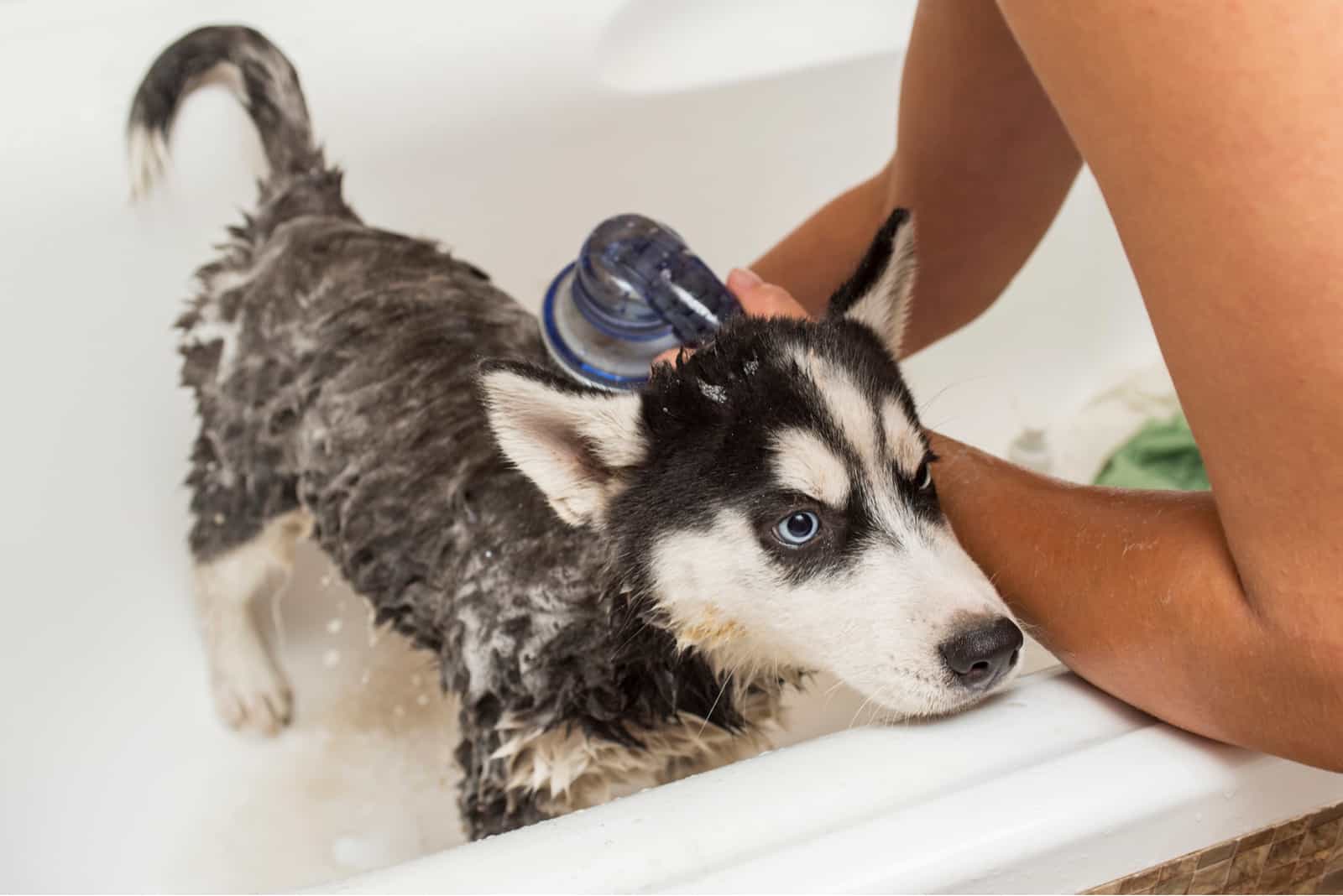
A regular bathing schedule can’t be performed without proper products. But, with so many shampoos and conditioners on the market, it’s almost impossible to know which one to use. Which of them actually does something and maintains your dog’s skin and keeps their coat in good condition?
The answer to this question is, in fact, individual. But what you can know for certain is what to look for in a safe shampoo and what to avoid.
If there are no natural shampoos available to you, go with something mild and made for sensitive skin. Even if your dog doesn’t have sensitive skin, it should use shampoos with fewer ingredients. If you see many chemicals on the label, put that product back on the shelf.
Never use human shampoo. We, humans, have a different pH level than all dogs. The normal pH level for humans is around 7–8, while dogs have it around 5.5. Our shampoos are differently formulated, making them only suitable for us.
Also, our shampoos have too many acids that can destroy a dog’s acid mantle on the skin and cause serious health conditions.
Regular dog shampoos aren’t that good. It’s not that they don’t do their job well; they do it too well. No wonder they clean everything; they’re full of harsh chemicals, soaps, alcohols, detergents, parabens, and a bunch of other stuff we can’t even pronounce!
These are the ingredients that strip down the natural oils. Avoid them at all costs.
For goodness sake, don’t wash your dog using dish soap! People have become accustomed to using products like Dawn washing up liquid to get rid of fleas. Some even go too far and use it for regular bathings. It’s for the dishes, not for your Husky, Retriever, or any other dog breed!
The reason why it’s so good for killing fleas is that it has harsh chemicals and degreasing ingredients. This strips natural oils quicker than any other product and must be stopped for good.
Homemade Natural Dog Shampoos And Conditioners
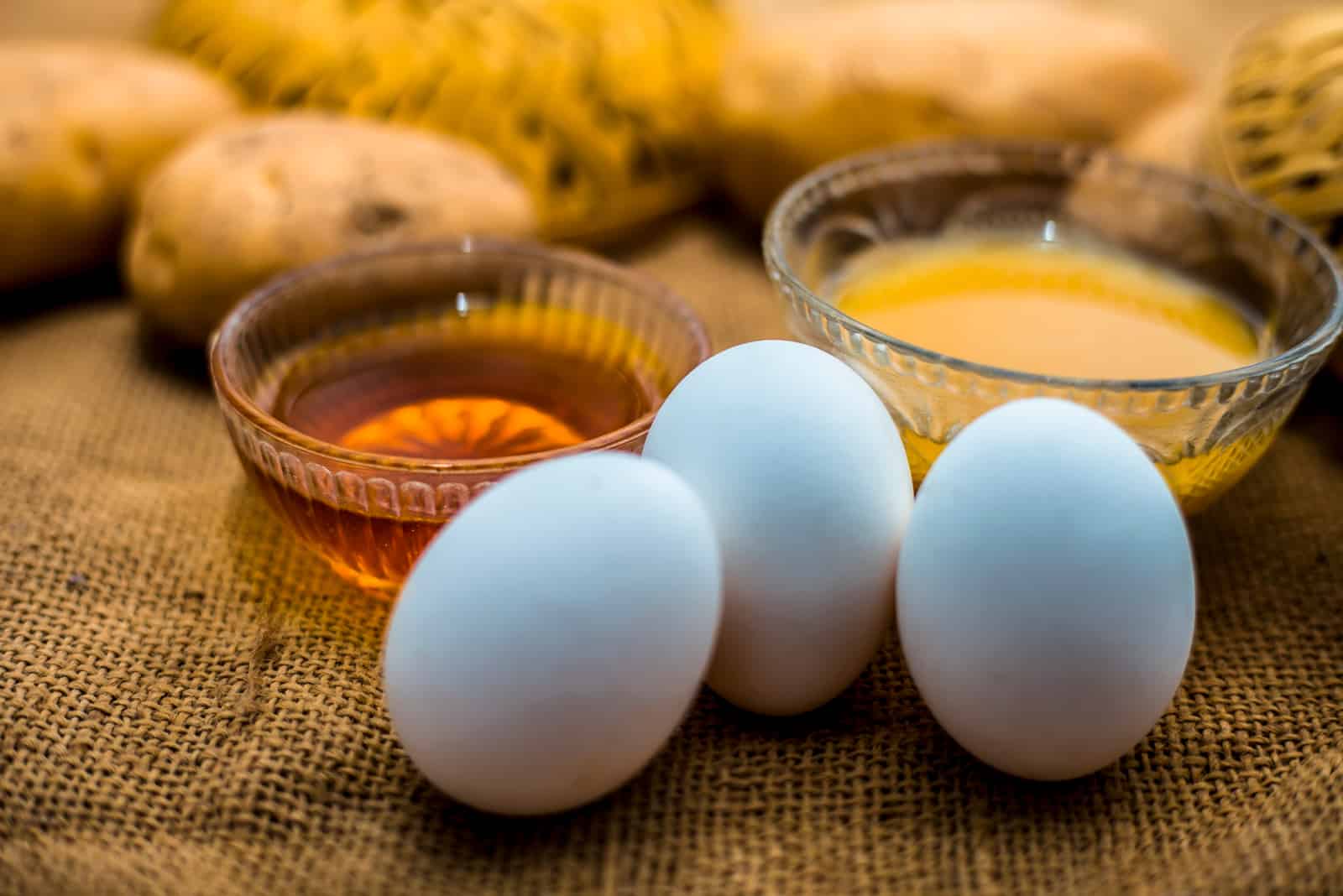
Since every dog owner wants only the best for their pooch, it’s no wonder people turn to natural products. No, it’s not to get in touch with the green side; it’s to use the many benefits natural products have.
Take eggs, for example. A conditioning egg mask restores moisture to dry skin and fur, as well as detangling matted fur. Just whip up some egg yolks with an equal amount of water, add in the egg whites, stir, and massage into your dog’s coat.
You can expect to see the best results if the egg reaches all the way through the hair to the skin. Always rinse thoroughly, three times if needed.
Let’s see what else we have in the pantry that might help out our dog’s coat…
Apple cider vinegar! It’s an amazing natural product that balances the skin’s natural pH. Apple cider vinegar can be added to dog shampoo to create an ultimate shampoo/conditioner or used as a conditioner on its own.
If you want to try it out with a shampoo, add one part of apple cider vinegar to every two parts of shampoo. The conditioner option tells you to add one teaspoon of this vinegar to one-quarter of water.
There is a conditioner that leaves a great smell. Rosemary can be used to make an excellent leave-in conditioner. It softens the fur, soothes dry skin, and gets rid of dandruff. What you should do is add two teaspoons of fresh or dried rosemary to four cups of boiling water, and then let it steep for 10 minutes.
Drain the rosemary and let it cool.
Yes, it is some kind of rosemary tea, but you’re using it to rinse your dog. This conditioner/tea/rosemary water doesn’t require additional rinsing.
Finally, here’s a conditioner that brings dead fur back to life, AND it soothes irritated skin. Combine half a cup of coconut oil, two teaspoons of olive oil, one teaspoon of bath oil, and two drops of vanilla extract.
Whip one egg in a separate bowl until it’s fluffy, add one cup of milk, and one tablespoon of honey. In a third bowl, mash a banana with one avocado and one cup of mayonnaise. Combine the egg and the banana mixture, then add the oil mixture.
Massage the conditioner into the dog’s fur and skin and let it sit for thirty minutes. Rinse thoroughly and keep the conditioner for up to two weeks in the fridge. Oh, and keep your dog from eating it.
When the skin has an oil imbalance, it produces too many oils, makes the coat greasy, causes a terrible skin condition, and makes the dog smell. This will make you wash the dog, again and again, repeating the same process and causing the same skin issues over and over again.
Balance is the key to everything.
Bathing Tips And Trick That Will Help You
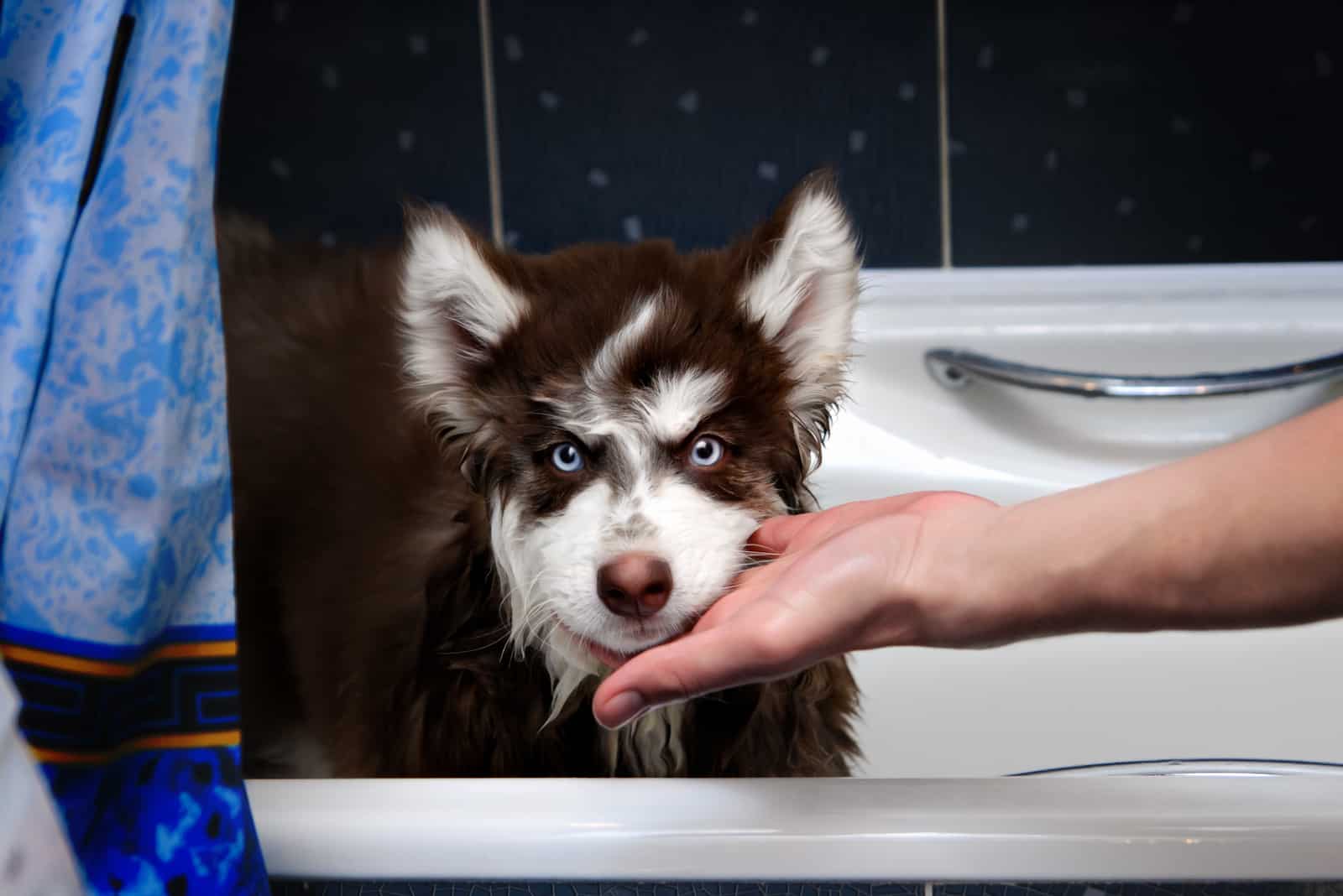
When bath time comes, it’s important to do everything right. You do want a clean and safe Husky, don’t you? Getting used to washing your dog is something that comes with time, but it never hurts to step up your game and learn a few tricks.
Here’s what you should pay attention to:
• brushing before the bath
• using room temperature water
• talking to your dog
• rinsing twice
• drying properly
• brushing after drying
Brush Before The Bath
Brushing the dog before the bath is always a good idea. In fact, it’s a must!
Huskies require less brushing than any other double-coated dog, but that doesn’t mean it can be skipped.
First, start with a wide-tooth undercoat rake brush to detangle any matting and remove dirt clumps. Then, go through the coat again using a slicker brush, which should remove most of the loose hair.
Using these two brushes should cover your entire brushing process because the rake brush reaches the undercoat, and the slicker brush focuses on the topcoat.
The Furminator undercoat rake brush and Hertzko slicker brush are the finest ones you’ll find on Amazon.
Use room temperature water
Although Siberian Huskies are tolerant of the cold, this is only when they’re dry. A cold and wet Husky is a big NO.
If your bath time falls in summer when it’s boiling hot outside or you live in a hot climate, bathing your Husky with cold water can actually do them a favor and chill them down.
But, if you don’t live anywhere near such temperatures, you should use only room temperature water.
Never use hot water; it dries out the Husky’s skin.
Talking to your dog
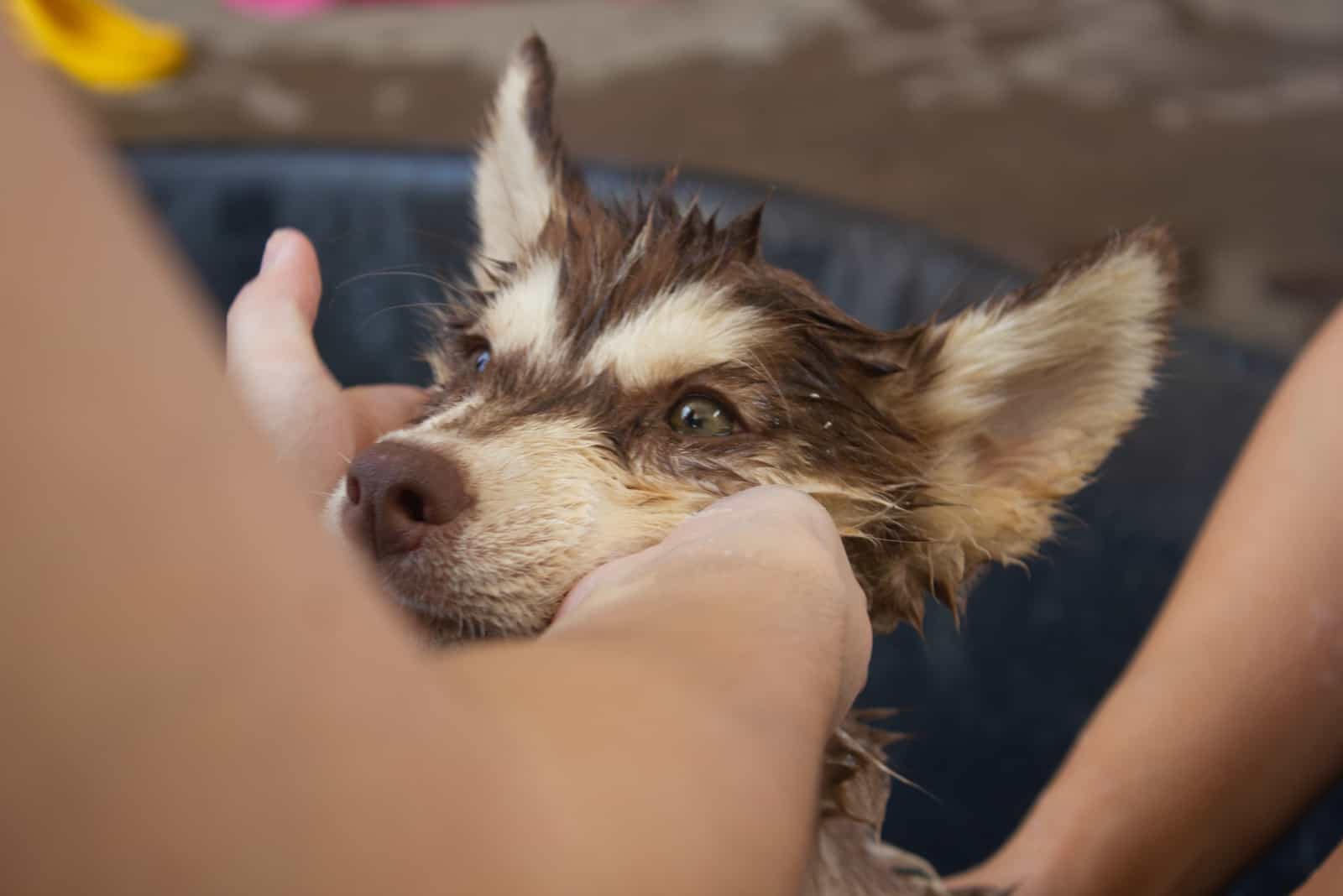
No one will call you crazy. Just talk to your Husky. It may surprise you, but talking to your dog and establishing any type of communication with him is a critical matter. This way, you get to ensure they can trust you.
Some Siberian Huskies love bathing, but most of them don’t. That’s why it’s so important to talk to them while bathing. Use a calm and soothing voice, no matter how badly they misbehave.
The more reassuring and calm you are, the more comfortable they will be. Eventually, they will overcome their fear of water.
Rinse twice
Most people make terrible mistakes when rinsing. Everyone seems to hurry up to try and finally finish the job. Just when we think we see no suds and we should end the bath, we should keep on rinsing. Why? Because you can never be too sure.
Rinsing twice ensures you get all the shampoo and conditioner off your dog’s hair. Any product residue, even the tiniest amount, can irritate the skin and cause more skin problems.
Rinse and rinse, ’til you’re out of water!
Drying properly
Sure, if you own a blow dryer, that can help a lot, but nothing’s wrong with a simple towel. The risk with blow dryers is that they’re often too hot, so dryers can hurt your Husky’s skin and dry it out even more!
Make sure you dry as much as you can before your dog gets in the post-bath zoomies mood. If the Husky stays wet for too long and the weather’s not that nice, skin problems may occur.
So, grab that large, fluffy towel and rub rub rub!
Towel drying over a blow dry wins every time.
Brushing after drying
In other words, make that hairdo stylish! Just like you brushed them before the bath, do it one more time after the bath. It can take up to several hours before a Husky is completely dry, so be patient.
Grab the rake brush and finish with a slicker brush.
We brush even after a bath to get rid of even more dead hair that accumulated during bathing. The dead fur will fall out eventually, but why shouldn’t we help out and keep our dog nice and tidy at all times? Or do you like seeking little cotton balls of fur rolling around the house?
What Can I Do If My Husky Hates Bath Times?
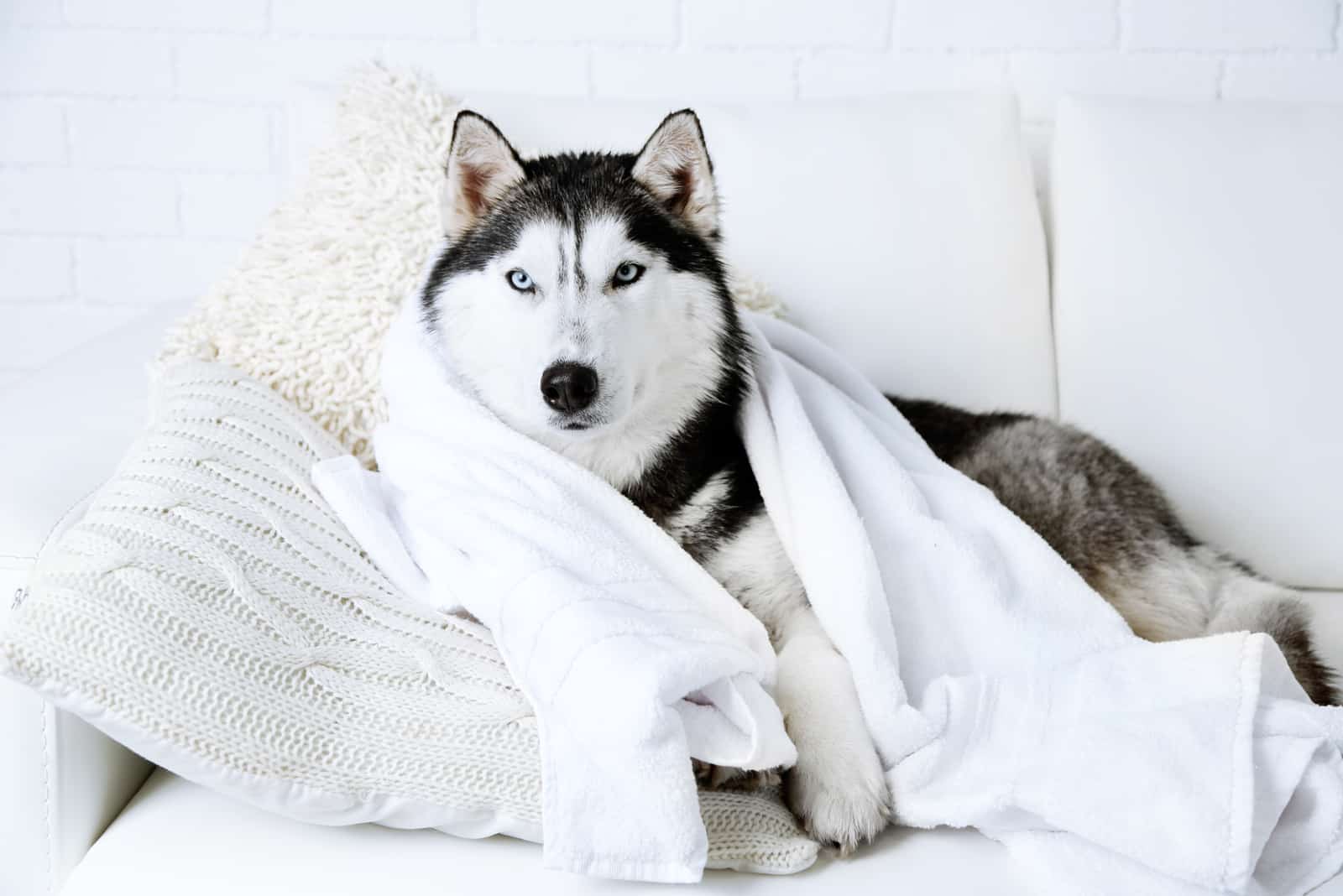
Huskies are dramatic and headstrong. There’s no way of tricking them into doing something they hate. Many Siberian Huskies are afraid of water. This doesn’t mean something’s wrong with your dog. It’s a normal reaction for Huskies because their ancestors haven’t been around the water… ever!
Take a trip down history lane. Siberian Huskies come from the north (Alaska, Canada, Siberia). There’s only ice and snow as far as the eye can see – no running water.
That’s why bath time can be such a difficult task to perform with a Husky. Keeping the dog calm and under control is sometimes impossible! What you can do to prevent such scenarios is to start training your Husky to get over their fear of water.
Help them get used to the fact they’ll get washed now and then. Play with water, talk to your dog in a soothing voice. The first couple of times, you may get wet from head to toe, but it can only get better as time progresses.
Should I Bathe My Husky More Often In Summer?
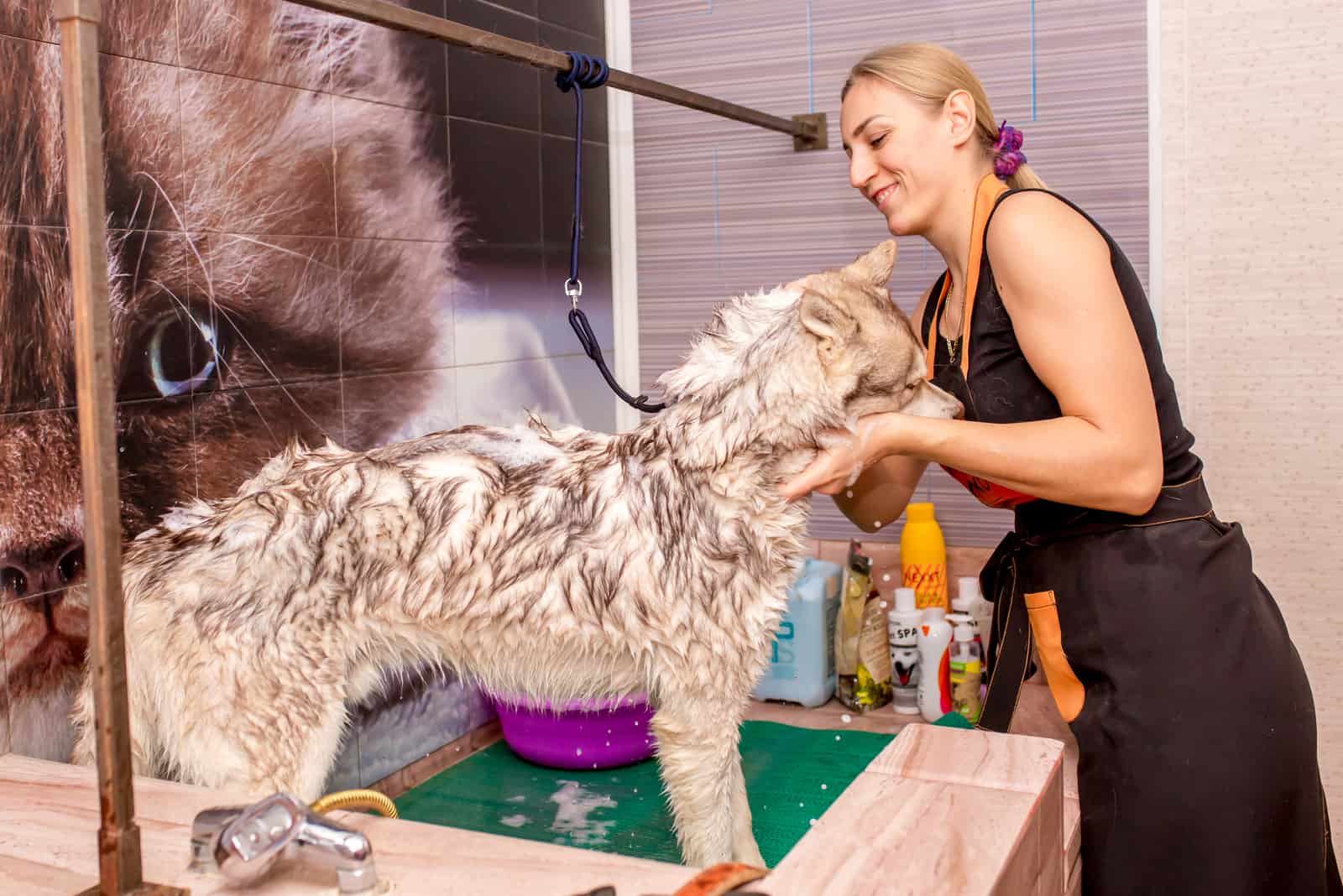
Yes, the sun is merciless. Yes, everyone’s hot. But no, that’s not a reason for bathing your husky more often during the summer. Unless it’s absolutely necessary, stick with the normal bathing schedule.
Keep the dog shampoo out of reach, and you’ll ensure the oils from your husky’s coat and skin don’t get stripped down unnecessarily. These natural oils play a vital role in keeping the coat and skin healthy. Just because it’s summer doesn’t mean their role is less important.
There are other ways you can cool down your Siberian husky. Keep him in the shade, turn on the AC, and don’t skimp on freshwater. Oh, and don’t let bath times happen more than every three to four months, okay?
Should I Bathe My Husky In Winter?
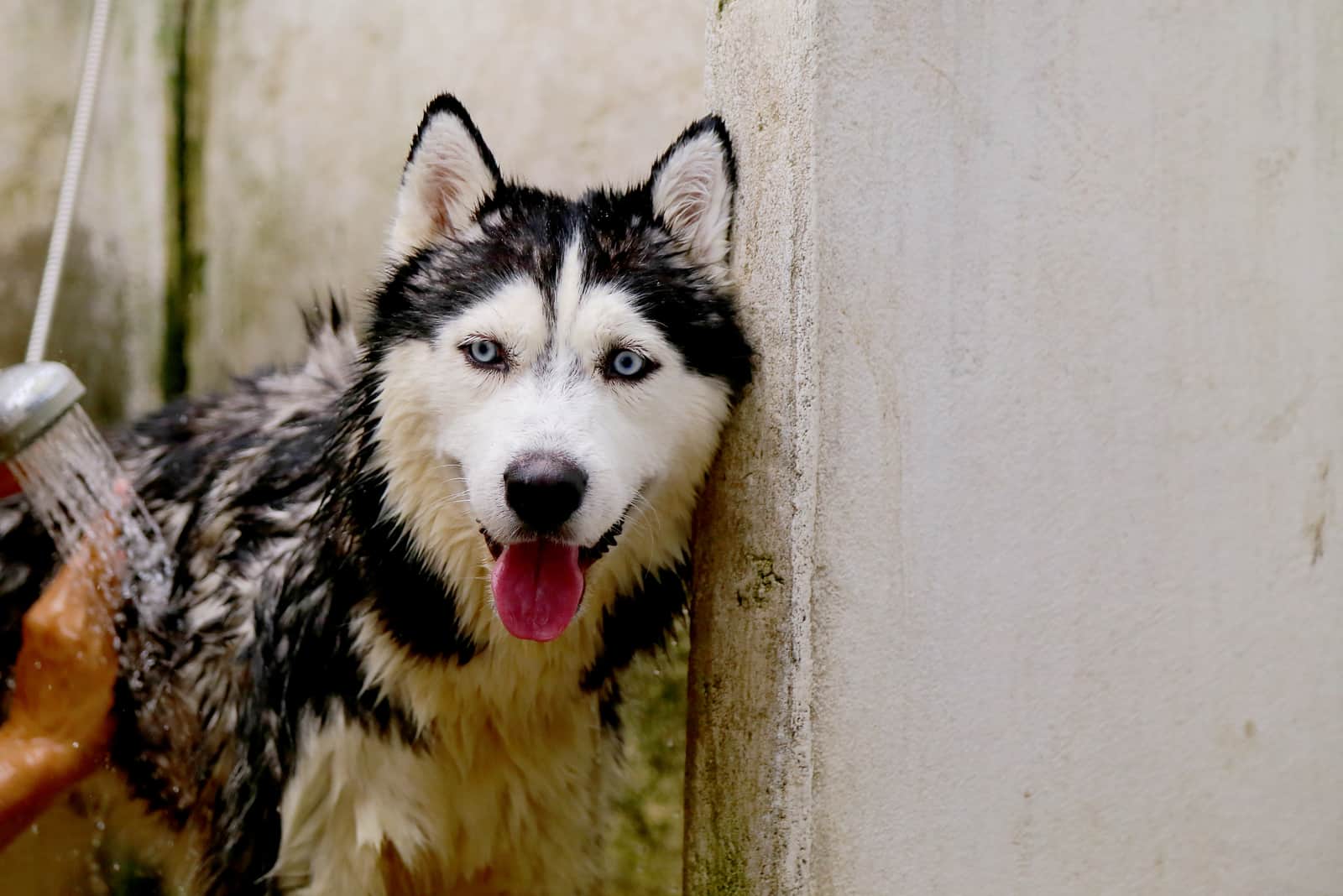
Just because it’s cold outside doesn’t mean we should forget about keeping our dog nice and clean. Yes, it’s winter, but remember: you have a snow dog! If bath time falls in winter, we see no reason why you shouldn’t give your husky a bubble bath!
Of course, baths should be taken indoors with lukewarm water. Your husky is a snow dog, not an ice dog!
Always make sure you dry him thoroughly after washing and keep him inside until he’s properly dry.
Why is it so essential to keep the dog inside for a while? Because a wet coat takes away your husky’s ability to stay warm in cold weather. Don’t make the mistake of letting him out immediately.
To Sum Up…
That cute Husky puppy you’re planning to adopt needs more care than you might think. Raising a Husky is no simple task. Nothing’s simple with these dogs, not even their bath time! But you’ve figured it out already, haven’t you?
Hopefully, you now understand why it’s so important to keep a balanced bath schedule. Did you follow this class carefully? How often should you bathe a Husky?
Paws up!
